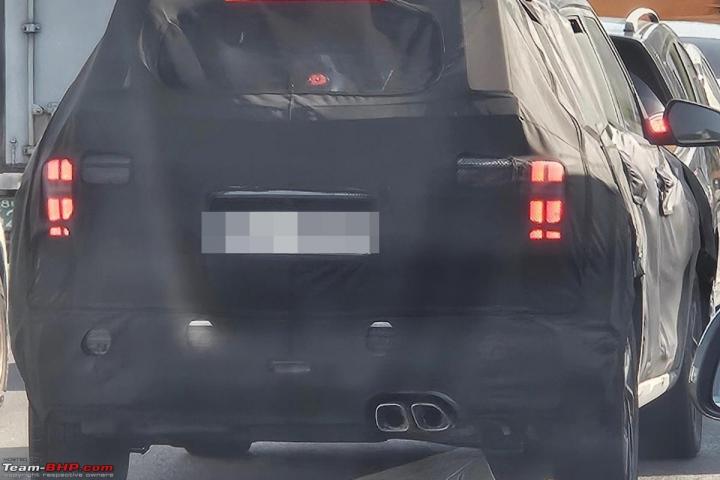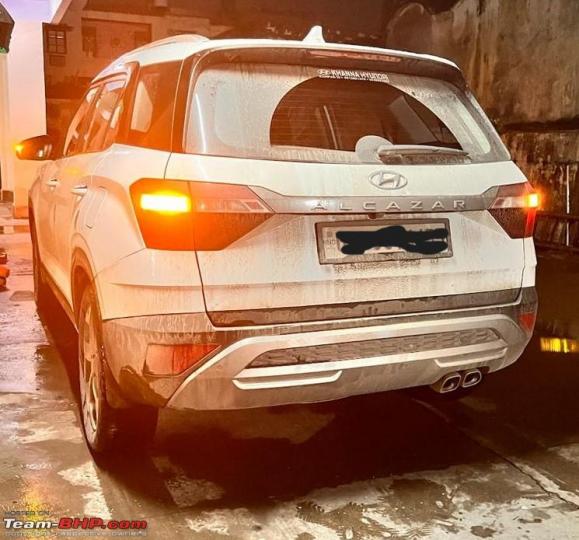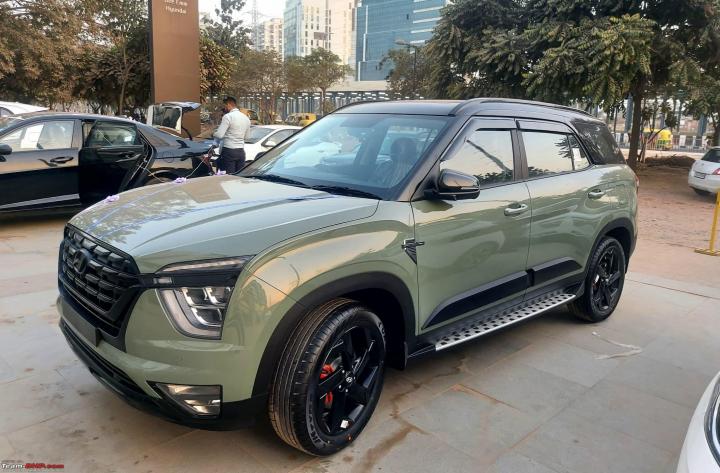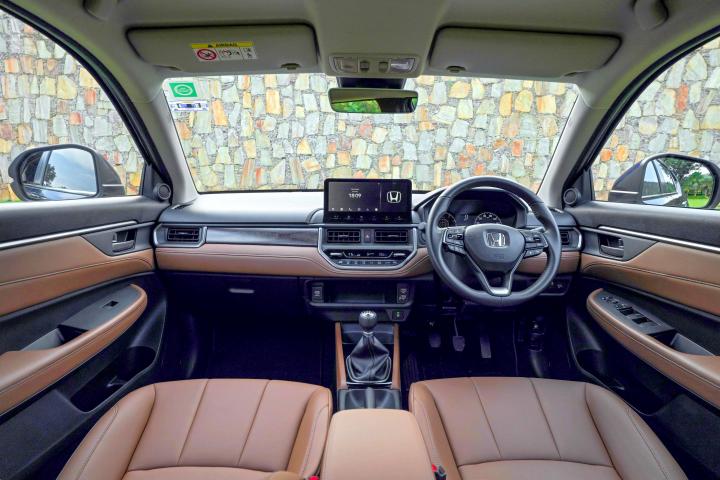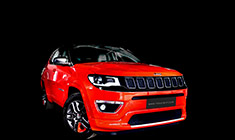News
Hyundai Alcazar facelift India launch delayed
The Alcazar facelift is expected to go on sale in India during the festive season.
Hyundai Alcazar is all set to get a major refresh later this year. The carmaker initially planned to launch the updated SUV by mid-2024, but according to a recent media report, the launch has now been postponed by a few months.
The Alcazar facelift is expected to go on sale in India during the festive season. It could arrive in showrooms around September-October 2024.
The updated Alcazar will get a redesigned exterior, replete with a new front fascia inspired by the new Creta, a reworked rear with L-shaped LED taillights and twin chrome exhausts.
Inside, the Alcazar facelift is likely to get the all-new dashboard from the updated Creta, replete with features like the dual 10.25-inch screens for the infotainment system and digital instrument cluster. The SUV will also get dual-zone automatic climate control, a panoramic sunroof, ventilated front seats and ADAS.
The Alcazar facelift is expected to be offered with a 1.5-litre turbo-petrol engine producing 158 BHP and 253 Nm and a 1.5-litre diesel that puts out 114 BHP and 250 Nm, paired with manual or automatic transmissions.
Source: Autocar India
- Tags:
- Indian
- Hyundai Alcazar
- Alcazar
News
1 lakh km completed in just 21 months with my Alcazar: 7 pros & 4 Cons
I look at it as a feature-loaded Creta with extra boot space and 2 jump seats.
BHPian sids1811 recently shared this with other enthusiasts.
And so it completes the figure in 21 months, overall it took less time than our Creta all thanks to the excellent Road Network getting built in UP and it is the de facto choice for any trip and place within 500 km.
Pros:
- Loaded to the bits. Pity the top end does not come in Auto so missed out on 2 or 3 features but still, the vehicle is loaded with stuff to make you feel satisfied.
- Excellent NVH properties for a Diesel, Roll down the window and then you realize how good the car is insulated from outside noise.
- Excellent mile cruncher, 500 km with just a small stop is a breeze and is not tiring. The car can go all day long at 90 - 100, that being the maximum speed the whole family generally drives at.
- Superb mileage. We have averaged 19+ km/l with the figure going up to 21+ sometimes. None of the tank fills are without a highway run so can't comment on city mileage. (more than 80% of fuel ups have been from the same IOCL pump)
- Decent Handling, for the extra space it offers, it still does not feel like a boat and rides well for its size. Special mention to the turning radius, it is surprisingly good for its size
- Physical controls. I have a liking towards old-school physical buttons and Alcazar has the right blend of touch and physical which makes it possible to keep your eyes on the road as compared to full touch where sometimes you invariably lose attention. The Knurled volume knob is better in finish than a lot of cars priced double than this.
- Auto hold parking brake, never realized how useful such a small feature can be once you start using it.
Cons:
- Headlights: Not at all suited for a vehicle of this class and size. The throw and intensity is not good and leaves a lot to be desired.
- Tyres: The original set from Apollo did not last 20k km even, on Bridgestone since then but the 18" large size is too pricey on the pocket
- Middle bench comfort: Hyundai has reduced the seat pitch to accommodate 3rd row and this is quite noticeable in the long runs when there is space between the back of your knee and the seat.
- No extended warranty beyond 3 years for high-usage people like us. At the present rate, I expect to cross 1.6 to 1.7 lacs km in 3 years. Hyundai does not offer a warranty beyond 1.5 lacs which is a bummer. Not exactly sure how this is going to fare after that and with so many electronics on board, every paid stuff will be expensive.
Short take: For an odd 2 million, it is a near-perfect, loaded, no-nonsense car if you look at it as Creta + some extra features + extra boot space / 2 jump seats for short runs. It still manages to bring a smile on an open good stretch of road, add some rain falling on the sunroof, and good music on the radio and you are nearing Nirvana


Check out BHPian comments for more insights and information.
- Tags:
- Indian
- Alcazar
- Car ownership
News
The good & not-so-good details of my Alcazar Adventure Edition
The 7-seater SUV has completed 4000 km, between 2 road trips and daily office commutes.
BHPian harsha_bornfree recently shared this with other enthusiasts.
The car is a 7-str, Turbo DCT Petrol AT.
Done with 2 road trips to the Himalayas, daily office commute over 2.5 months and 1 servicing.
Research, considerations and buying decision
Having previously owned a Diesel Ecosport I wanted a similar punchy car (petrol this time) but loaded with modern creature comforts that I missed in the older car.
I love spirited driving whenever the roads give me the leeway so the engine performance was non-negotiable. The budget was around 20L.
Test drove the following:
- Thar (great looks but handling was too rigid for my taste)
- Seltos (nothing particularly bad but it is way too common in Delhi NCR)
- Alcazar (adventure edition looked great. Turbo was lovely but we wondered if we needed a 7-seater)
- Scorpio N (lovely engine and handling but interiors are outdated. Mileage a concern too. booked one but cancelled)
- XUV 700 (everything was great but AX7 was out of budget and AX5 is short on features. Mileage is a concern again.)
- Kushaq (nice peppy engine but small in stature for the price point)
- Taigun (same observations as Kushaq. Also DSG issues sounded scary)
- Astor (boring engine but nice interiors)
After roughly 2 months of testing endlessly reading all BHP threads and watching all YT videos we finally decided on Alcazar. It felt like a perfect balance of performance and features. Almost no other car (spare Seltos) offered these many goodies in our budget. It helped that the adventure edition is gorgeous!
Purchased from Dee Emm Hyundai Gurgaon. Cost us 23L on-road. The sales experience was okayish. Nothing to write home about.
Driving experience
The good parts:
Turbo
- Turbo is a joy to drive. Kicks in nicely around the 2K mark.
- Not too soon to feel jerky and not too late to be of use only on highways.
NVH
- One of the things I'm particularly enjoying with the petrol engine is the super low NVH levels which means driving hard whenever I want to without thinking twice.
- This wasn't something I could do with my older diesel.
- Even at speeds of 120kmph+, there's barely any noise or vibration so highway rides have been super comfy.
Handling and transmission
- Auto transmission has been a great plus, particularly in the mountains.
- Did two trips: one to Rajgarh in the Himachal foothills and one to Gangotri in Uttarakhand, upper Himalayas. Loved every bit of both drives.
- This reminds me that the turning radius is very impressive for a car of this length. Very useful in both mountain roads and narrow city lanes.
Mileage
- The mileage has been decent too. Right now averaging around 11.8kmpl as per Fuelio.
- Highway drives pull this up to 14 and city drives pull this down to 10.
Features
- The interiors have been top-notch. Physical controls, touchscreen, sage-coloured seats, window curtains, speakers, even the gear handle... these are all the things I enjoy every time I get into the car.
The not-so-good parts:
Suspension/wheels and seats
- The ride quality is something I would have expected better at this price range. I know the threads indicate that the suspension is soft but in my experience, I've seen Tatas do much much better.
- I've started to suspect this isn't as much about the suspension as it is about the 18-inch wheels. There's probably lesser shock absorption overall. Would love to understand this better from fellow BHPians.
- Same with seats. They don't feel as plush and don't hug you at the ends which means you have more work to do when when you're driving in the ghats.
Steering
- Steering is responsive but Ecosport's felt like a feather which I liked. Not complaining. This is just a remark.
Digital aspects
- Finally, the in-built maps are pathetic. Forget being useless, they're incorrect at many times and I have to fall back to my wired Android auto.
- While the voice control recognizes everything I say that car supports very few functions! So I'm not sure what good this feature is for.

Check out BHPian comments for more insights and information.
- Tags:
- Indian
- Alcazar
- Review
- Car ownership
News
Hyundai Alcazar facelift spied; LED taillights revealed
The Hyundai Alcazar facelift is expected to be launched by mid-2024.
Having launched the Creta facelift, Hyundai is now gearing up to introduce the updated Alcazar in the Indian market. The upcoming Hyundai Alcazar facelift was recently spotted testing in South Korea. While the prototype was wrapped in heavy camouflage, the latest spy image does reveal the new LED taillights.
The Alcazar facelift is expected to get a redesigned rear fascia with L-shaped tail lamp clusters, possibly connected by an LED light bar. The SUV will also get twin chrome exhaust tips.
Hyundai is also likely to make several modifications to the front of the Alcazar. The design changes could be inspired by the new Creta.
Inside, the Alcazar facelift is likely to get the all-new dashboard from the updated Creta, replete with features like the dual 10.25-inch screens for the infotainment system and digital instrument cluster. The SUV will also get dual-zone automatic climate control, a panoramic sunroof, ventilated front seats and ADAS.
The Alcazar facelift is expected to be offered with a 1.5-litre turbo-petrol engine producing 158 BHP and 253 Nm and a 1.5-litre diesel that puts out 114 BHP and 250 Nm, paired with manual or automatic transmissions.
Source: Kangnamtimes
News
Hyundai Alcazar facelift spied with new dual-tone alloy wheels
The upcoming Alcazar is expected to get several cosmetic updates just like Creta.
The Hyundai Alcazar is all set to get a makeover just like its 5-seater version, the Creta. The updated SUV is expected to be launched by mid-2024 and is currently being put through its paces.
The latest spy images reveal a new alloy wheel design. The new dual-tone wheels have a star-like design pattern. The SUV is also equipped with functional roof rails.
The upcoming Alcazar is expected to get several cosmetic updates just like Creta. It could get a bold grille with L-shaped LED DRLs and a redesigned rear fascia.
Inside, the Alcazar facelift is likely to get the all-new dashboard from the updated Creta, replete with features like the dual 10.25-inch screens for the infotainment system and digital instrument cluster. The SUV will also get dual-zone automatic climate control, a panoramic sunroof, ventilated front seats and ADAS.
The Alcazar facelift is expected to be offered with a 1.5-litre turbo-petrol engine producing 158 BHP and 253 Nm and a 1.5-litre diesel that puts out 114 BHP and 250 Nm, paired with manual or automatic transmissions.
Source: Rushlane
News
Rumour: Hyundai Alcazar facelift to be launched by mid-2024
Much like the Creta, the Alcazar is also expected to get a few cosmetic updates.
Having launched the Creta facelift last month, Hyundai is now gearing up to introduce the updated Alcazar. As per the latest reports, the Alcazar facelift is likely to be launched by May or June 2024.
Much like the Creta, the Alcazar is also expected to get a few cosmetic updates. It could get a bold grille and L-shaped LED DRLs at the front, a redesigned rear fascia and new alloy wheels.
Inside, the Alcazar facelift is likely to get the all-new dashboard from the updated Creta, replete with features like the dual 10.25-inch screens for the infotainment system and digital instrument cluster. The SUV will also get dual-zone automatic climate control, a panoramic sunroof, ventilated front seats and ADAS.
The Alcazar facelift is expected to be offered with a 1.5-litre turbo-petrol engine producing 158 BHP and 253 Nm and a 1.5-litre diesel that puts out 114 BHP and 250 Nm, paired with manual or automatic transmissions.
Source: Autocar India
- Tags:
- Indian
- Alcazar
- Hyundai Alcazar
News
Honda Elevate vs its competition: Comparing the interiors
The cars in this comparison include Creta/Seltos, Grand Vitara/Hyryder, Nexon old/new, and even the Hector and Alcazar.
BHPian RedMaw recently shared this with other enthusiasts.
Second Look at Elevate
Today, I had a chance to look at the Elevate again, and as fate would have it, I was also visiting other showrooms. So this is an interior-only comparison between Elevate and Competition. I am planning to do a test drive of all in the next couple of weeks.
Elevate vs. Creta/Seltos
I have to give it to Hyundai here. When they started in India, they were not a premium player, and costly products like the Santa Fe and Sonata failed miserably. But now, when you look at the Elevate and Creta/Seltos side by side, it's clear that the Creta and Seltos are more premium offerings. I'm not talking about the abundance of features, but the interior design, use of materials, and interior space scream premium in the Creta and Seltos. I compared variant to variant, and every variant in the Creta/Seltos was worth an additional ₹50,000 compared to the Elevate.
On specifics, the Creta/Seltos driver seat is more comfortable than the Elevate's. It's larger in the Creta/Seltos and has generous legroom. With adjustment, you'll be at home in no time. But in the Elevate, legroom is just enough, and pushing the seat all the way back will compromise the rear legroom. Moreover, the Elevate driver seat does not have good under-thigh support, which is a deal breaker for me.
The Creta/Seltos dashboard is modern and uses more premium plastics compared to the Elevate's. I would still pick the Elevate's classy dashboard, though. But on a side-by-side comparison, you can clearly see that Kia has made sure the Seltos have better materials than the Elevate.
Moving to the rear seat, the Creta and Seltos are again the clear winners. The rear seat length is smaller in the Elevate, and it lacks under-thigh support. The elevated footrest also puts passengers in an uncomfortable position. Even though the Elevate uses leatherette, the Creta/Seltos rear seat is more comfortable for longer rides due to its reclining function. Three passengers can sit at ease in the Creta/Seltos, while only two and a half can fit in the Elevate.
The only place where the Elevate may have an advantage is in safety. Honda cars generally have good safety ratings, while Hyundai and Kia have been criticized for their unstable shell in the past. However, if Hyundai/Kia releases the Creta/Seltos with a better shell with a 5-star rating, there would be no contest.
Elevate vs. Grand Vitara/Hyryder
I will be honest here, I am biased against Suzuki. It's nothing against their customers, I thought Suzuki products were not for me. But boy-oh-boy, I was never so wrong in my life. I went to the Nexa showroom with this prejudice. But, after seeing the Elevate and Grand Vitara back to back, it changed. Stepping into the Grand Vitara immediately gives you the impression it's a car built to change perceptions. The rear seat is a bit longer than the Elevate's, but it gives a comfortable seating position for three people. We were not sitting shoulder to shoulder, but under-thigh support is similar to the Elevate's, i.e., lacking. The regular floorboard and flat rear beach give a good seating position in the rear.
Moving to the front, the driver seat is similar to the Elevate's, again lacking under-thigh support. Free travel of the seat and steering adjustment means I am comfortable again in no time. I am able to use the armrest, unlike the useless one in the Elevate (which is positioned very far back). Petrol boot space is similar to the Elevate's, but the hybrid is not worse either. Interior materials could have been better at this price range. But, at ₹22L on-road for the Delta+ OR G hybrid, I am okay with interior quality (an additional ₹20-30K will spruce up the interiors).
One of the biggest advantages of the Grand Vitara and Hyryder is their fuel efficiency. The hybrid variants can achieve up to 25 km/l, while the Elevate only gets 15 km/l. However, the Grand Vitara and Hyryder are also more expensive (2L more compared to ZX CVT). Overall, the Grand Vitara and Hyryder are better cars than the Elevate. They offer more features, better fuel efficiency, and more modern technology. However, they are also more expensive with not-so-good interiors.
Elevate vs. Hector
I know the Elevate and Hector are not strictly apple-to-apple comparisons, but with recent price reductions and discounts, the Hector Shine CVT and Elevate ZX CVT are only a couple of thousand apart, so it makes sense to compare them. The Hector is a big car, but it has become an older model. It's been five years since its release, and the cosmetic changes are no longer enticing for new buyers.
Stepping into the Hector after the Elevate makes the Hector look like a palace. There is an abundance of space in the Hector. The driver's seat of the Hector is one of the most comfortable places in the entire car. The seat is large enough to accommodate me and provides good support all around. I wish Honda had provided this seat in the Elevate. Ingress is better in the Hector than in the Elevate, and the large, comfortable driving seats mean longer less tiring drives. The infotainment system is still an eyesore. MG should have provided a floating system or slab-like system instead of the after-market-looking, sore thumb system.
In the rear, the flat bench and flat floorboard mean comfortable seating for three passengers. One thing I never noticed before in the Hector is the lack of depth in the rear. Raised floorboards mean the height between the rear bench and the floor is lower, leading to an awkward knee position, at least for me. A flat-folding rear bench gives the option to use it as a bed, which is lacking in the Elevate.
Compared to the Elevate, Hector is a good option if I am looking for a spacious and comfortable SUV but it is not as fuel-efficient or modern as the Elevate or the Grand Vitara/Hyryder.
Elevate vs. Alcazar
The Alcazar Prestige (O) diesel TC was available for approximately ₹22.5 lakh after discounts, so we had a look at the Alcazar as well. Compared to the Elevate, the Alcazar looks muted. There is not much difference between the interior of the Creta and the Alcazar except for the use of more premium colors. The rear seats are compromised in the Alcazar but comparable to the Elevate. Both are not comfortable for long durations. The third row is almost useless, but it can be used for kids or folded down for more luggage space. We quickly moved on because if we were compromising on the rear seat, we could buy the Elevate at a lower price instead of the Alcazar.
Elevate vs. Nexon old/new
Again, I don't have a high opinion of Tata Motors. They are one of the most intelligent and idiotic car manufacturers in India. On the one hand, they won't move away from their egg design, but on the other hand, the new Nexon interiors are clearly an upgrade compared to the old Nexon or Elevate. The Nexon is a smaller CSUV than the Elevate, but it is also much cheaper. On the front, I did not like the glossy, glowing thing in the steering wheel. The entire time I was in the front, I was wondering what would happen in case of a crash. Will the glass-like material harm me, or others? How will the airbag get deployed? This spoiled the visit and I could not concentrate much on anything else.
Some of the materials used and the gear lever are better than in the Elevate, but Tata QC is still pathetic. Our new car had a broken lock in the armrest. The infotainment system did not switch on and the battery had to be removed and rehooked for it to work. The rear bench is good for its size, but we sit lower compared to the Elevate. The Nexon is very much loaded compared to the Elevate for its price, but it does not have the same level of quality and refinement as the Elevate. Honda QC and service are vastly superior to Tata. Until Tata improves on this aspect, their cars are not for me.
Overall
The Elevate missed a golden opportunity to win the market decisively. When Apple released the iPhone 1, there were plenty of phones in the market. However, Apple took time to study the market, improve on the drawbacks of existing mobile phones, and released a vastly superior phone that propelled them to where they are today. Honda, with the made-for-India Elevate, could have released a vastly superior car compared to anything in the market and won over Indian customers. The Elevate is a good SUV, but it is not the best in its class. It is not as premium as the Creta/Seltos or the Hector, and it is not as fuel-efficient as the Grand Vitara/Hyryder. Elevate is a master of none product that will quickly settle into a lower position in the CSUV market.
P.S: For reasons beyond my understanding, I am still keeping the Elevate booking. Maybe the power of Honda compels me to retain the booking.
Check out BHPian comments for more insights and information.
News
Hyundai Alcazar facelift spied testing in India
The Alcazar facelift is likely to get features like a 360-degree camera and ADAS.
A test mule of what appears to be the updated Hyundai Alcazar has been caught testing in India.
The Hyundai Alcazar is expected to get several cosmetic updates. The heavy camouflage on the front and rear sections suggests that the SUV will receive a redesigned front fascia along with a few changes at the rear. These might include a new grille, bumpers, new LED headlights and tail lights, new design alloy wheels and a refreshed interior.
Hyundai is also working on the Creta facelift. The midsize SUV could borrow design cues from the flagship Palisade. It is said that the changes made to the Alcazar could be on similar lines. We can expect the refreshed models to come equipped with new features such as a 360-degree camera and ADAS.
Currently, the Alcazar is offered with a 1.5-litre turbo-petrol engine producing 158 BHP and 253 Nm and a 1.5-litre diesel that puts out 114 BHP and 250 Nm. While a 6-speed manual gearbox is standard, the petrol version is available with a 7-speed dual-clutch automatic, while the diesel gets a 6-speed automatic option.
Source: Motorbeam
News
Hyundai Creta & Alcazar Adventure Edition launched
The Creta Adventure Edition is available with a 1.5L petrol engine, while the Alcazar comes with either a 1.5L turbo-petrol or 1.5L diesel.
Hyundai has introduced the Creta and Alcazar Adventure Editions in India. The Creta is available in two variants priced from Rs 15.17 lakh, while the Alcazar comes in four variants priced from Rs 19.04 lakh (ex-showroom).
The Adventure Editions get an all-black front grille, black 17-inch alloy wheels with red brake calipers and special 'Adventure' badges on the fenders. Both SUVs are offered in the new Ranger Khakhi exterior colour, in addition to Abyss Black, Atlas White and Titan Grey shades.
The Adventure Editions get an all-black interior with Sage Green inserts on the dashboard, special mats and silver pedals. The SUVs also get Sage Green piping and stitching on the seats. Both models come equipped with a dashcam.
The Creta Adventure Edition is available with a 1.5-litre petrol engine that makes 113 BHP and 144 Nm. The SX variant is offered with a 6-speed manual, while the SX (O) trim gets a CVT.
The Alcazar Adventure Edition is available with either a 1.5-litre turbo-petrol engine producing 158 BHP and 253 Nm or a 1.5-litre diesel that puts out 114 BHP and 250 Nm. While a 6-speed manual gearbox is standard, the petrol version is available with a 7-speed dual-clutch automatic, while the diesel gets a 6-speed automatic option.
Hyundai Adventure Edition ex-showroom prices:
Creta:
- 1.5L Petrol SX MT - Rs. 15,17,000
- 1.5L Petrol SX(O) CVT - Rs. 17,89,400
Alcazar:
- 1.5L Turbo Platinum MT - Rs. 19,03,600
- 1.5L Turbo Signature(O) DCT - Rs. 20,63,600
- 1.5L Diesel Platinum MT - Rs. 19,99,800
- 1.5L Diesel Signature(O) AT - Rs. 21,23,500
News
Hyundai Creta & Alcazar Adventure Editions officially teased
Reports suggest the Adventure Edition will come in a new exterior colour called "Ranger Khaki".
Hyundai is gearing up to launch the "Adventure Editions" of the Creta and Alcazar in India. Ahead of its launch, the carmaker has just released a few teaser images, revealing some details of the upcoming special edition.
The Creta and Alcazar Adventure Editions will get special fender badges with the 'Adventure' logo, black alloy wheels with red brake calipers and a black front grille with a blacked-out Hyundai logo. Reports suggest the Adventure Edition will come in a new exterior colour called "Ranger Khaki".
Inside, the SUVs could get all-black interiors with contrast stitching for the upholstery and 'Adventure Edition' badges on the headrests and door sills.
The Adventure Editions will get the same powertrain options as the standard models. The Creta comes with 1.5-litre petrol and diesel engines, while the Alcazar is available with a 1.5-litre turbo-petrol and a 1.5-litre diesel engine. Both models are likely to be offered with manual and automatic transmission options.
- Tags:
- Indian
- Creta
- Alcazar
- Special Edition
- Teaser
Pages



